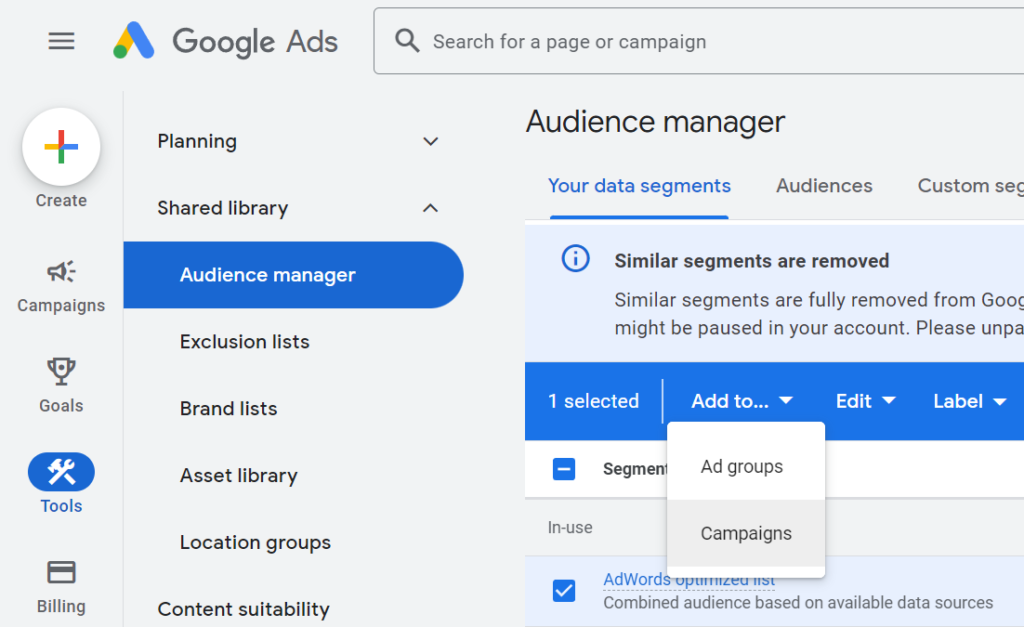In an era where digital presence is intertwined with business success, mastering the art of online advertising is crucial. Among the various strategies at your disposal, retargeting stands out for its precision and effectiveness when engaging website or mobile phone app visitors. But what is Retargeting and why do you need it? Retargeting, also known as remarketing, refers to the practice of targeting users who have previously interacted with your website or mobile app but didn’t convert to a customer yet. Retargeting allows you to advertise very specifically to these visitors, and Google Ads makes it easy and powerful.
Google Ads is a powerful tool in the digital advertising domain and offers robust tools for implementing both marketing and retargeting campaigns that can significantly enhance your marketing efforts. This post will explore how retargeting in Google Ads can serve as a game-changer for your digital strategy, guiding you through the benefits, setup process, and best practices.
Why Retargeting Matters
- Increased Conversion Rates: Users who are retargeted are more likely to convert because they have already shown interest in your products or services.
- Brand Recall: Retargeting keeps your brand top-of-mind which is especially helpful for products with longer sales cycles like enterprise hardware and software, gently nudging users who might have been distracted or undecided during their first visit to your site or app.
- Cost-Effectiveness: By focusing on users who are already familiar with your brand, retargeting often results in a high ROI compared to targeting new users.
Setting Up a Retargeting Campaign in Google Ads
Getting started with retargeting in Google Ads involves a few strategic steps:
*This tutorial assumes you already have a Google Ads account set up. If you haven’t, please visit ads.google.com and sign up for an account and proceed. You will need to wait for your retargeting audience to populate after you’ve added the Google Tag to your website or app, or upload a Customer Match List to begin immediately.
- Tag Your Site for Remarketing: First, you’ll need to add a piece of Google remarketing code, known as a tag, to your website. This tag allows Google to collect data on your site visitors and add them to your remarketing audiences going forward. If you have a digital marketing team this step may have already been done for you during setup, but it’s best to check first so that you can track your ROI from the start.
- Upload a Customer Match List:
 If you have existing CRM data you’d like to retarget and pipe into Google Ads, export it in a .CSV format and upload it as a Customer Match List. This will allow you to populate your audiences even if you haven’t set up the Google Tag on your website.
If you have existing CRM data you’d like to retarget and pipe into Google Ads, export it in a .CSV format and upload it as a Customer Match List. This will allow you to populate your audiences even if you haven’t set up the Google Tag on your website. - Create Remarketing Lists: Segment your site visitors into different lists based on their behavior. As an example, you can create lists for users who added products to their cart but didn’t check out, visited a specific product page, by visitor business type, or engaged with a particular piece of content. You’ll find this under the “Audiences” section of Google Ads. Once you’ve done this, go to the “Audience Manager” section and click “Add to” and then select your Ad Group or Campaign you wish to use to retarget this group.
- Craft Your Campaign: With your lists in place, create a new campaign in Google Ads, selecting “Display” or “Search” depending on where you want your ads to appear. Note: Display typically refers to advertisements that have an image or media, while Search refers to ads that appear at the top or bottom when people use Google Search. Then, choose “Remarketing” as your campaign type.
- Design Engaging Ads: Develop compelling ad creatives that will resonate with your retargeted audiences and personalize your message based on their past interactions with your site for maximum impact. As an example, if a potential customer viewed a T1000 Computer, make the retargeting ad about the T1000 computer and how it will revolutionize their business. Take your time here and make sure that your ad copy resonates with your target customer. If you get any step of the ad creation wrong, like an unappealing CTA or value proposition, it will negatively affect your ROI and campaign results.
Best Practices for Retargeting Success
To maximize the effectiveness of your retargeting campaigns, consider the following best practices:
- Frequency Capping: Limit the number of times your ads are shown to the same user to prevent ad fatigue and maintain a positive brand perception. You can also rotate ad creative and messaging to prevent ad fatigue and have additional opportunities to speak to additional customer pain points.
- Targeted Messaging: Tailor your ad content to match the persona, interests, and behaviors of each remarketing list for increased relevance and engagement.
- Experiment with Different Offers: Test various offers, such as discounts, free trials, or exclusive content, to see what motivates your retargeted audiences to convert.
- Monitor and Adjust: Continuously analyze the performance of your retargeting campaigns and make adjustments as needed. Experiment with different segments, ad creatives, and bids to optimize your results.
Concluding Thoughts
Retargeting in Google Ads offers a powerful way to reconnect with users who have shown interest in your brand, turning missed opportunities into conversions, though few small businesses are using it. Whether you’re looking to increase sales, raise brand awareness, or achieve other marketing objectives, retargeting with Google Ads can be a strategic component of your overall digital strategy.
Need more help? Writethings.ai can help you write ad copy and create compelling images to use in your Google Ad campaigns.